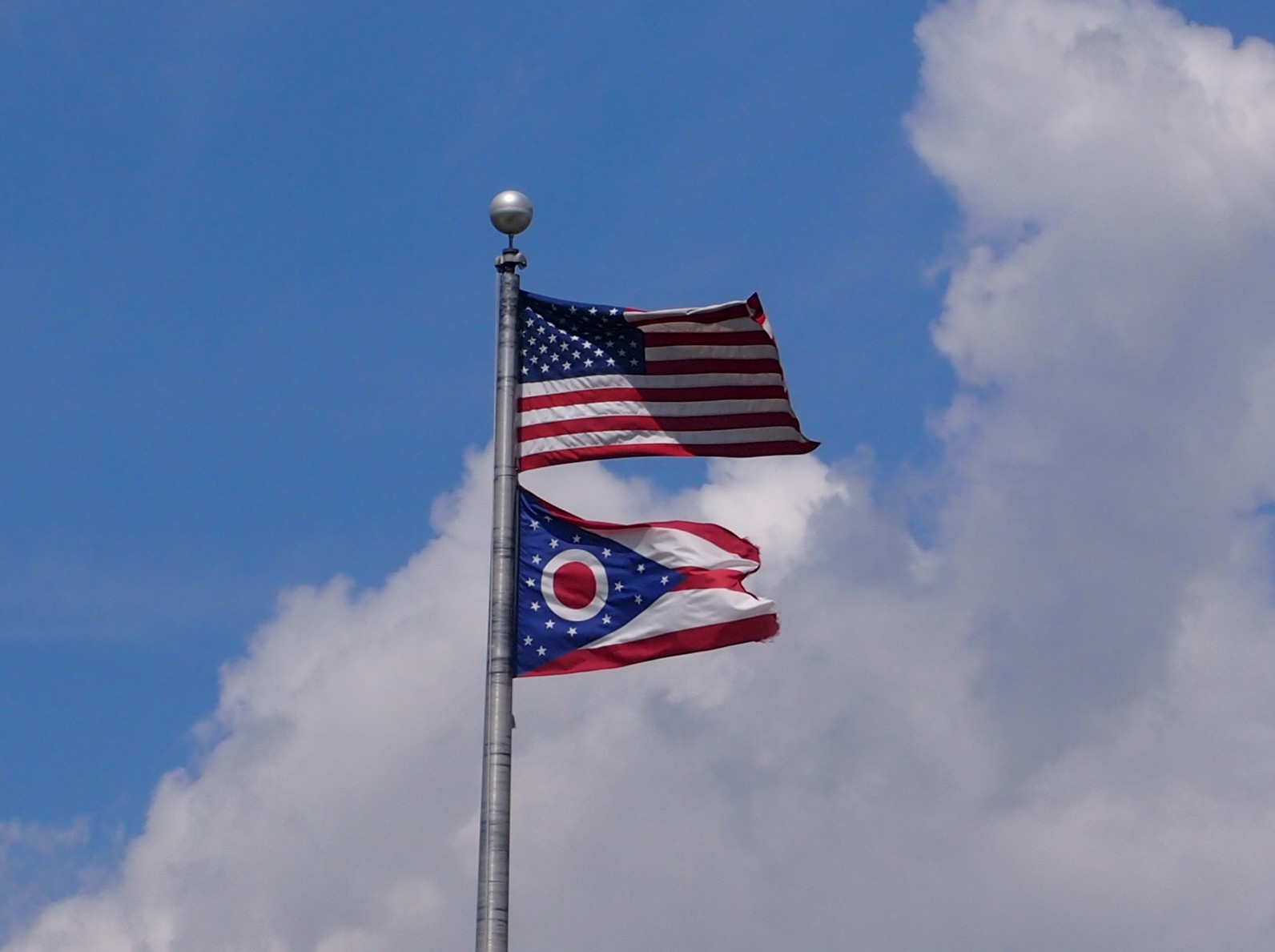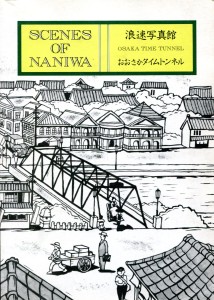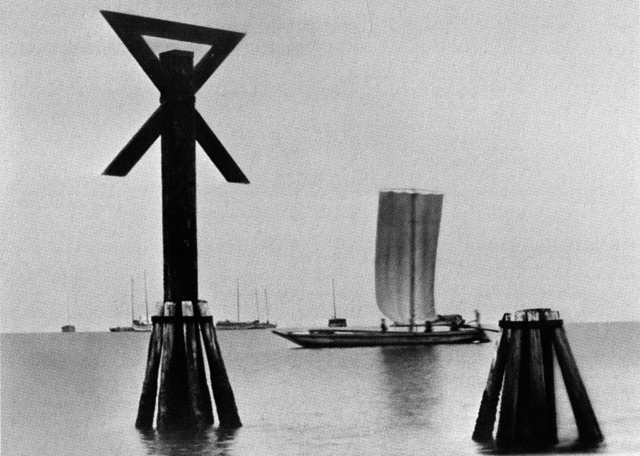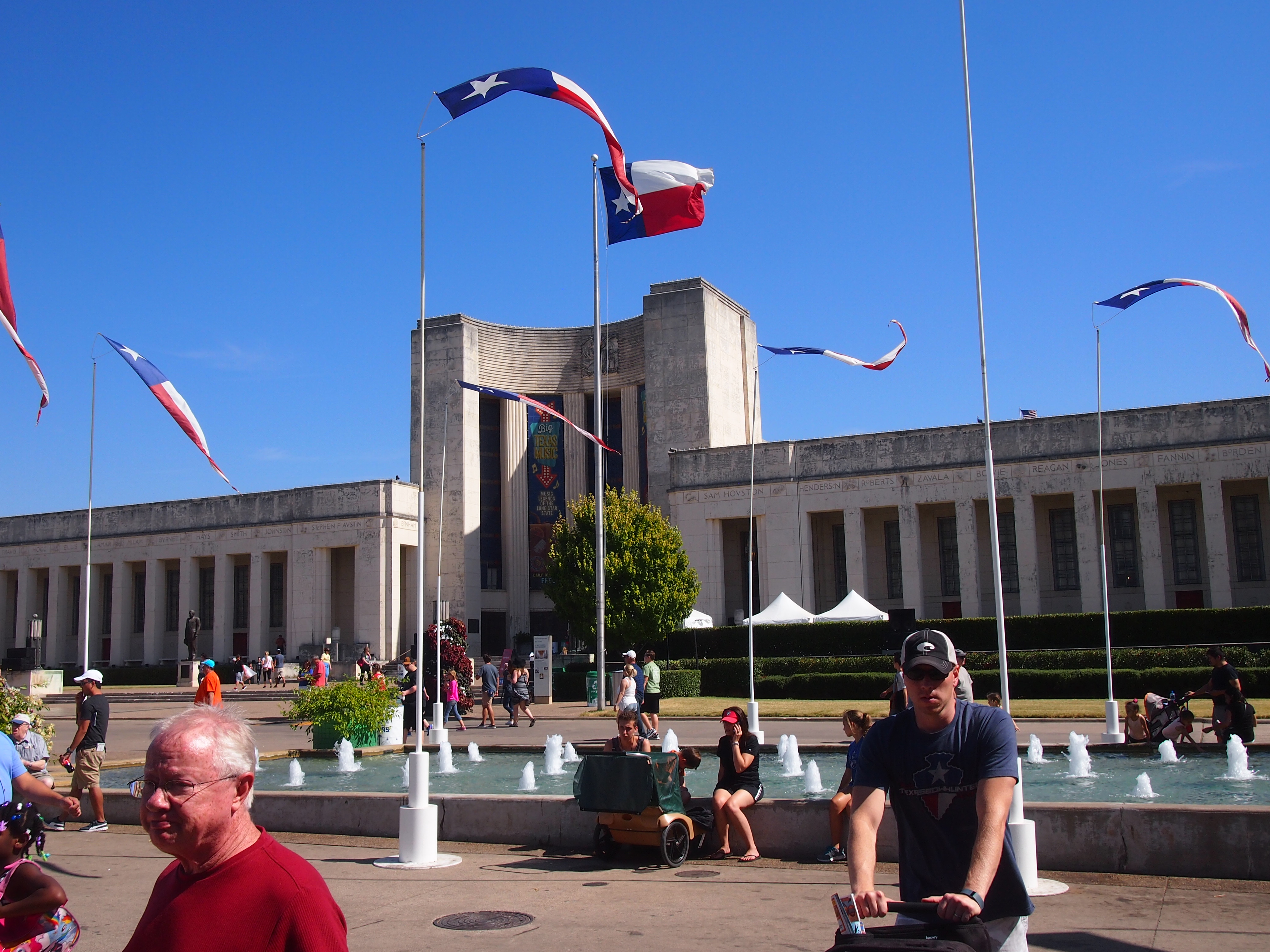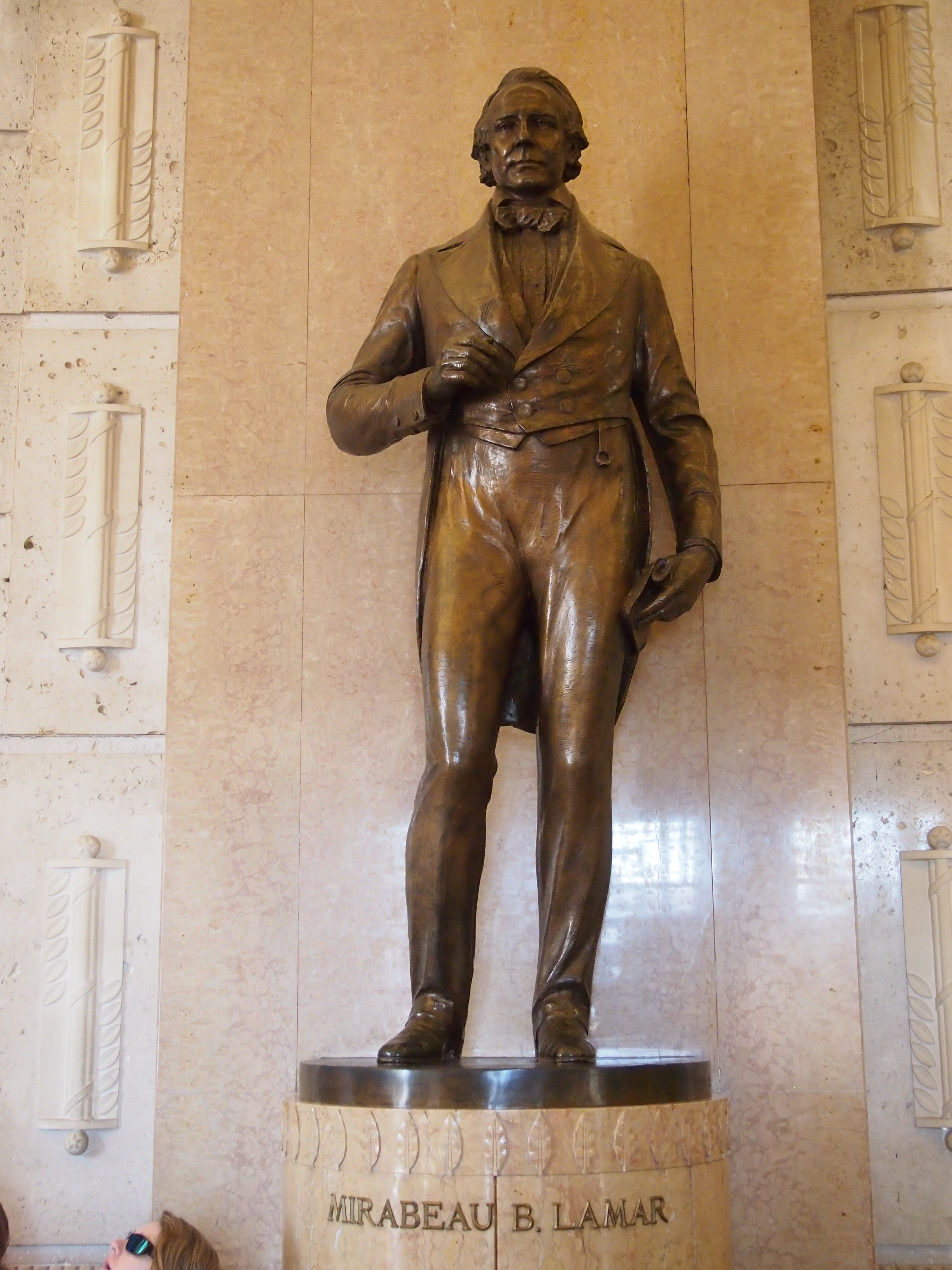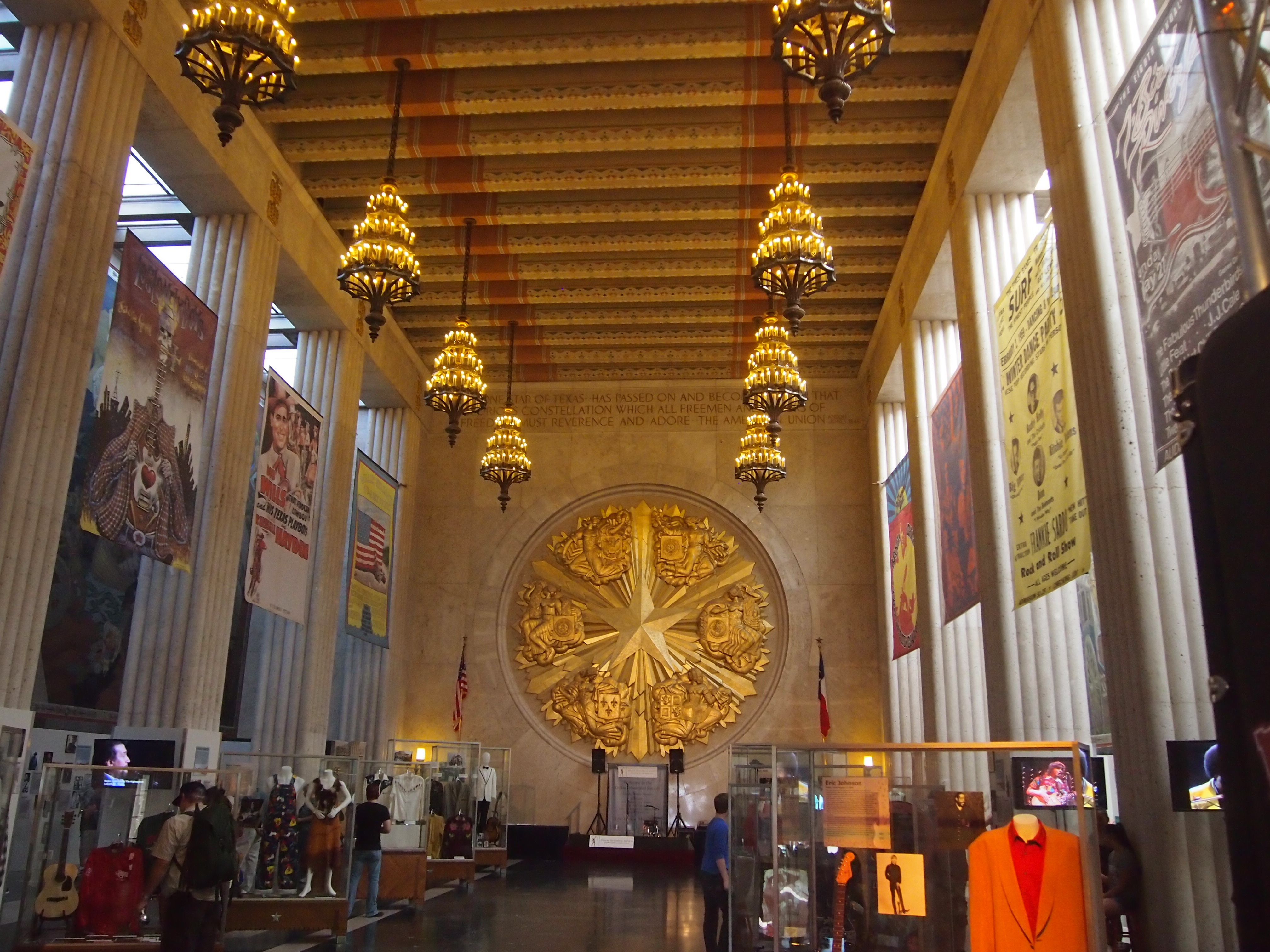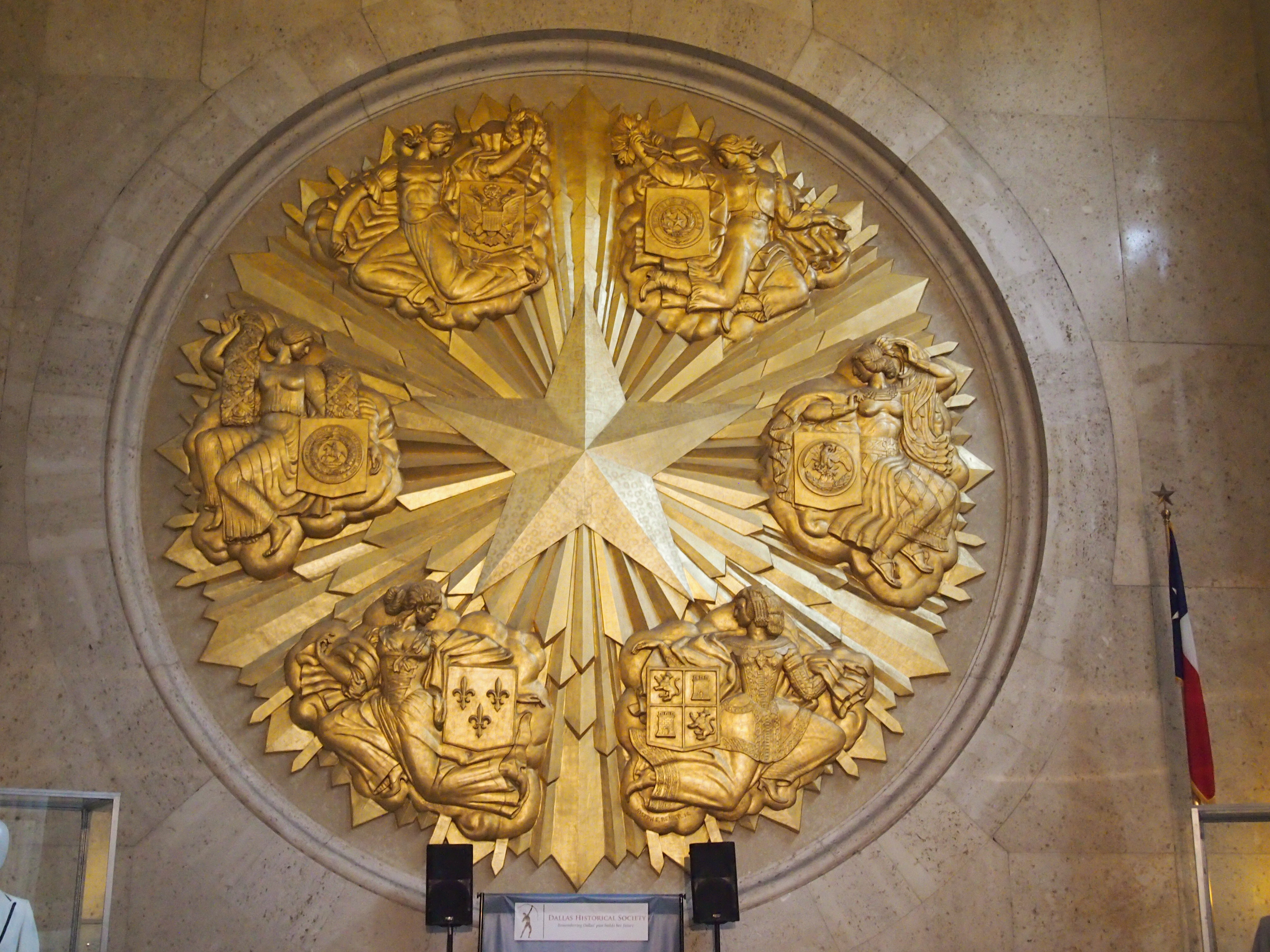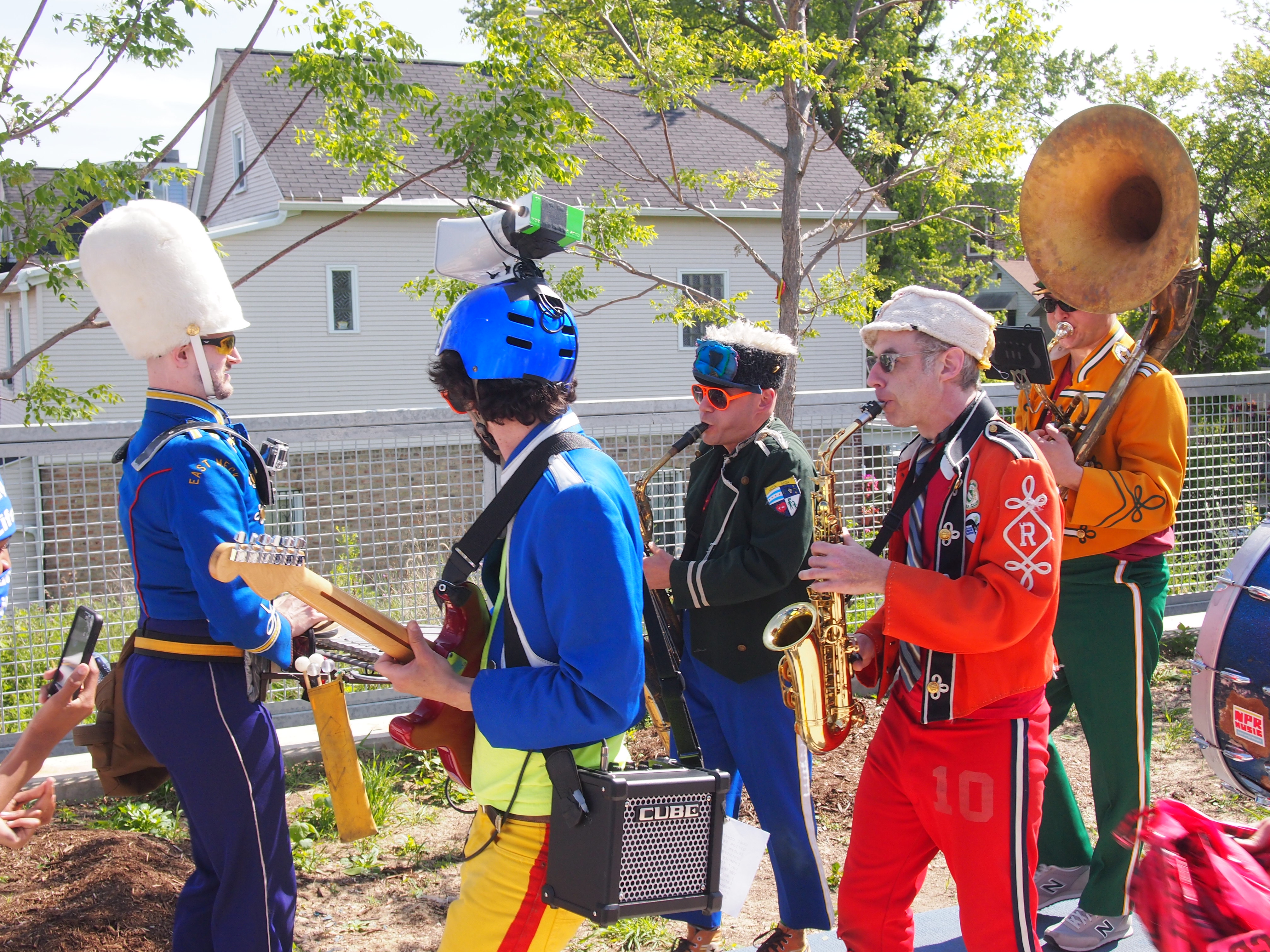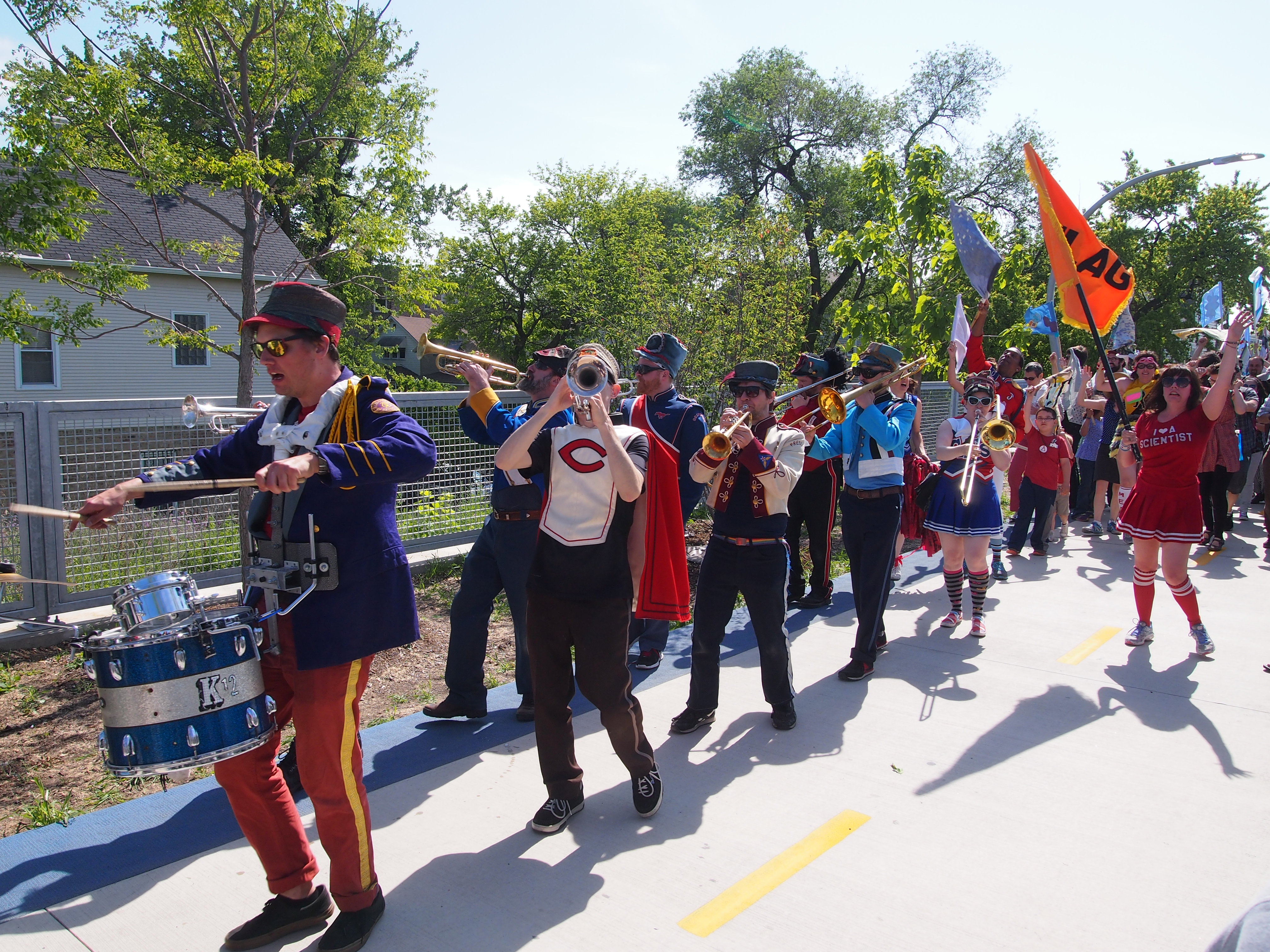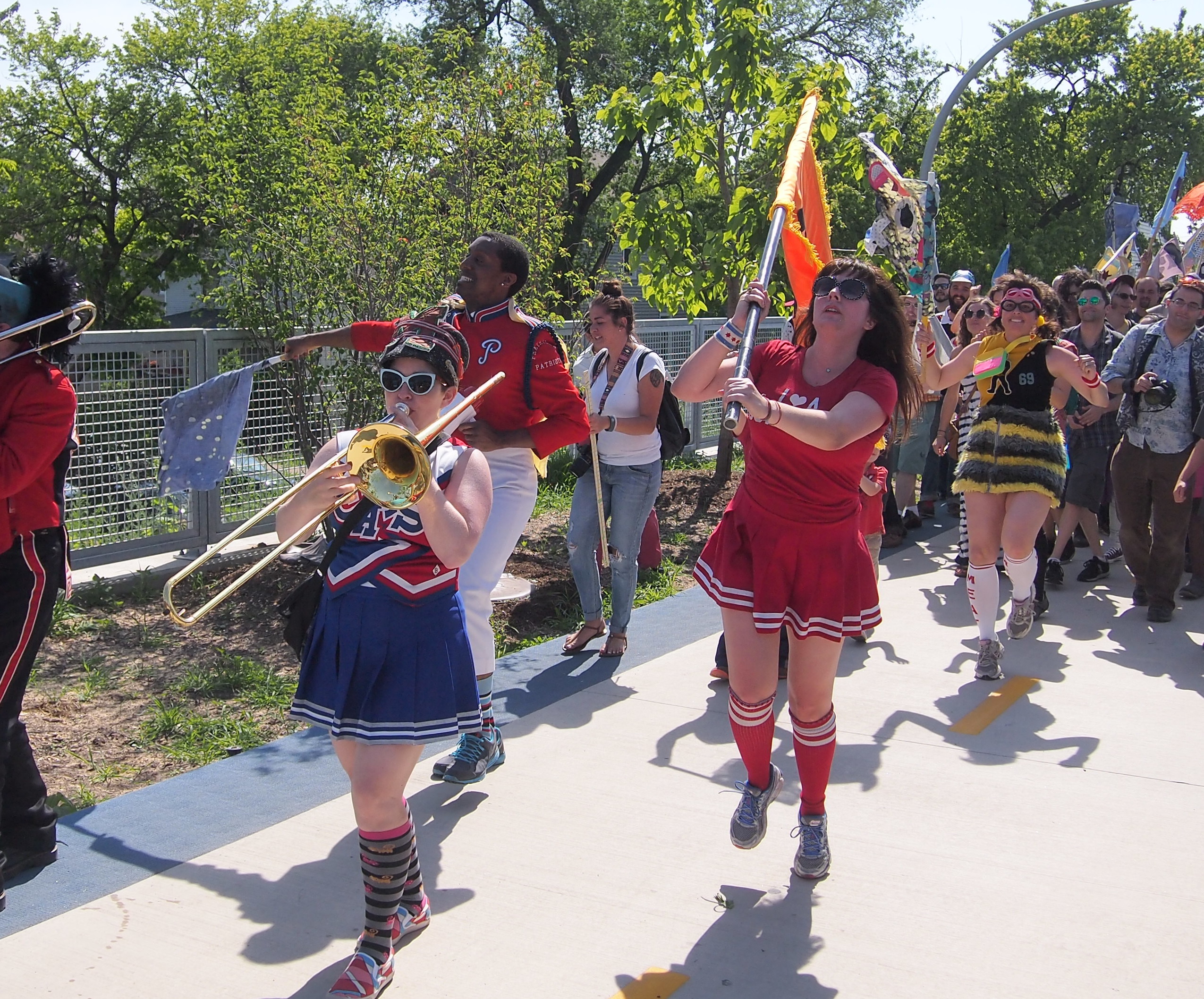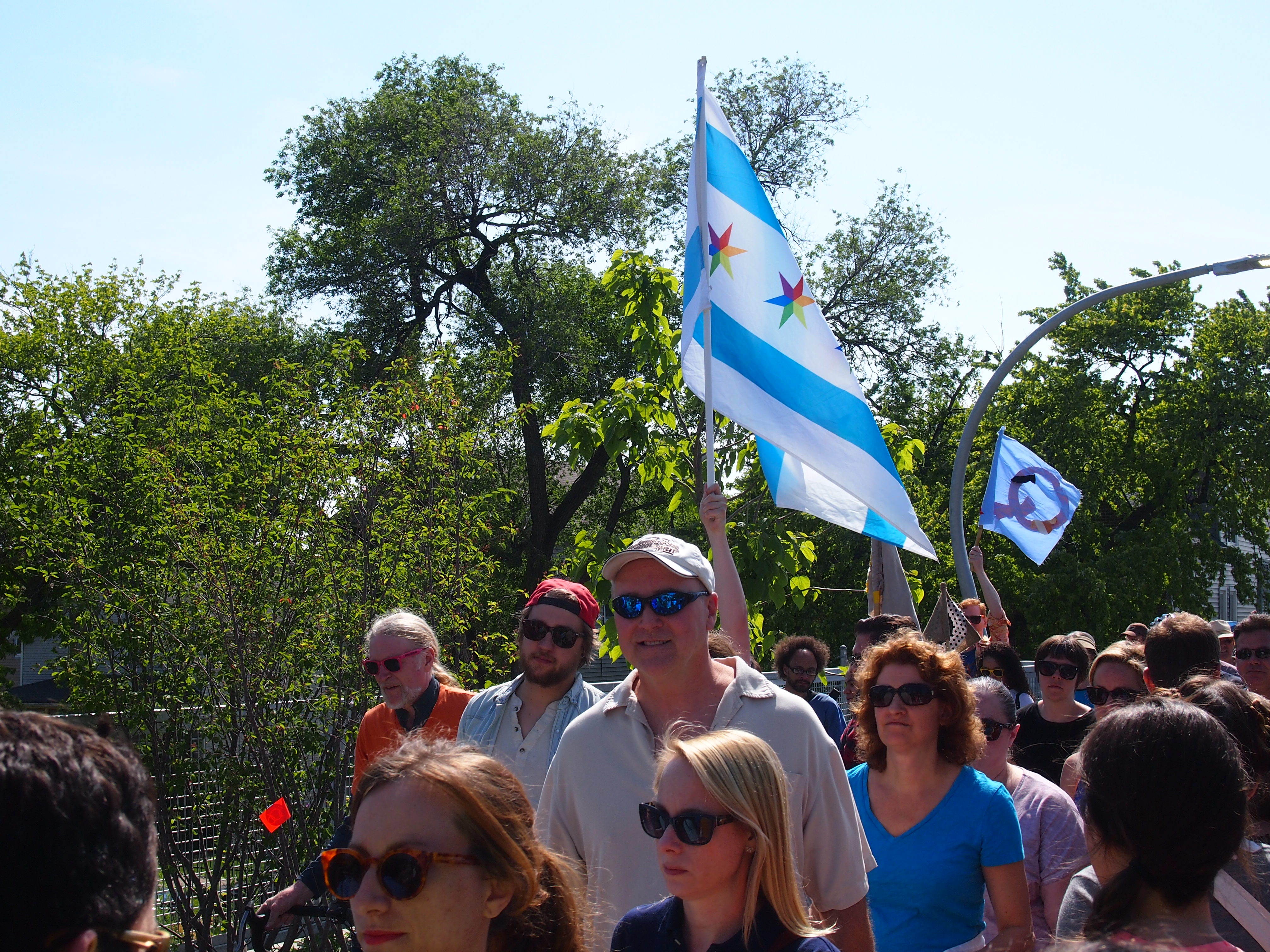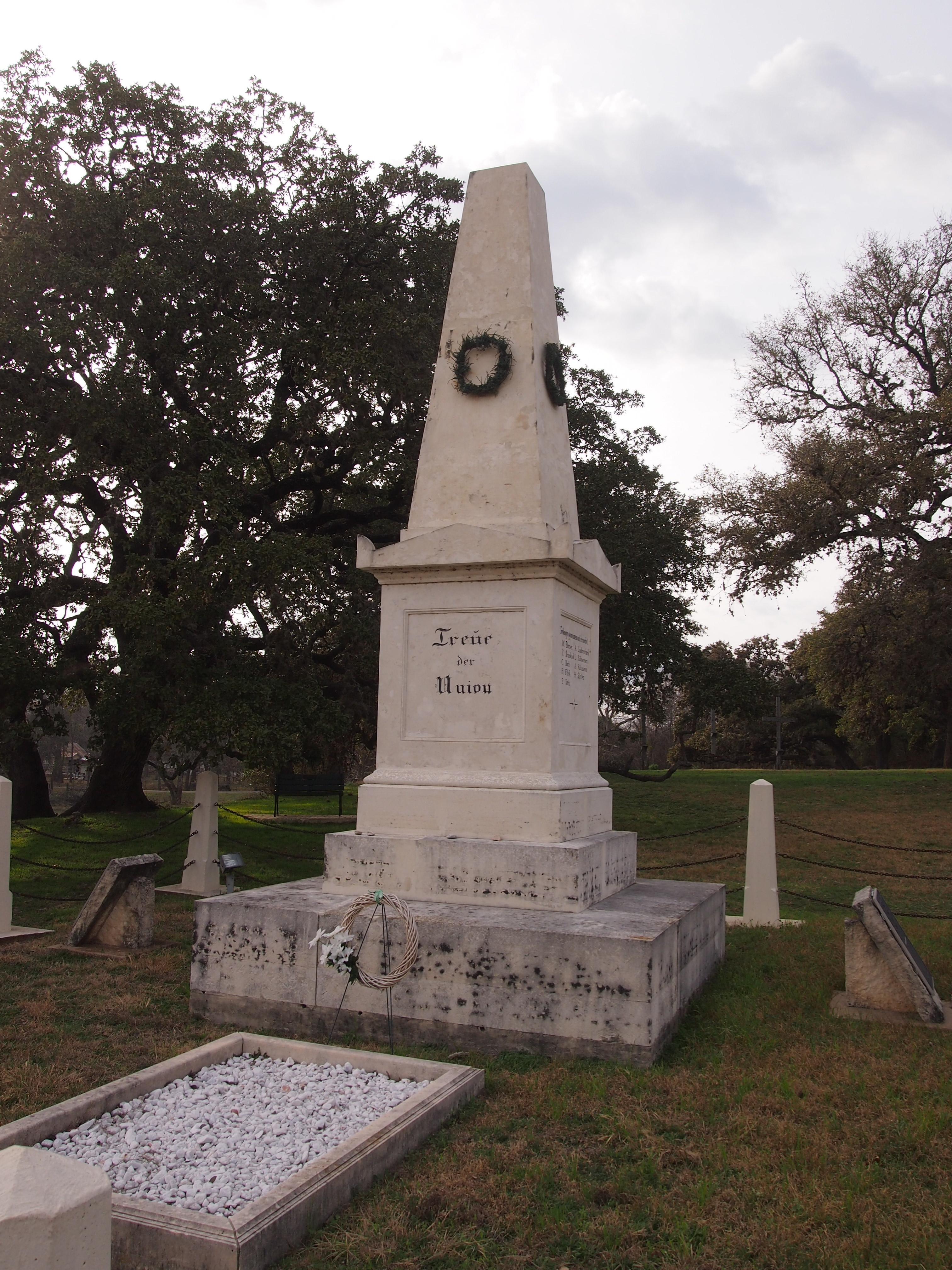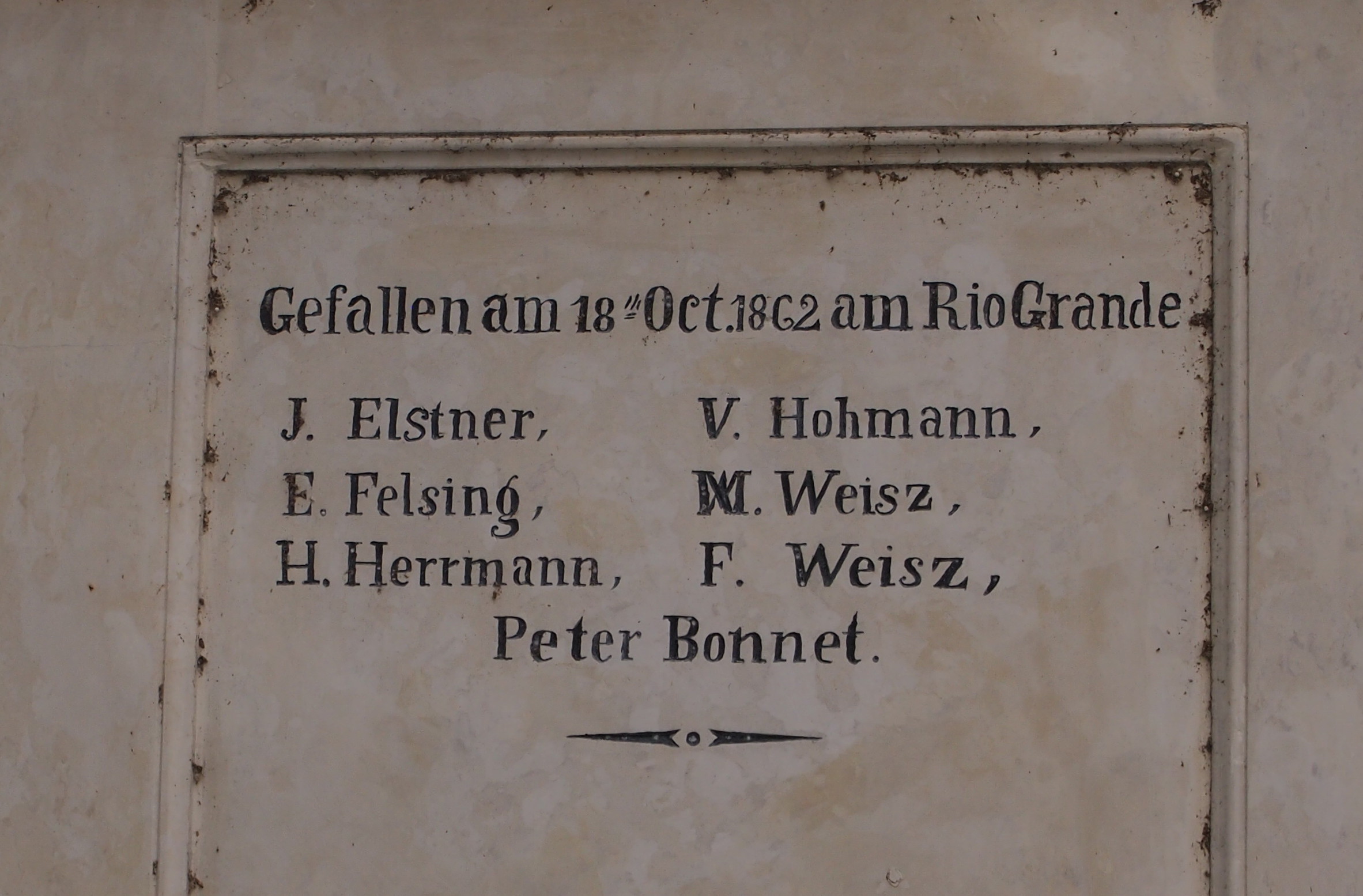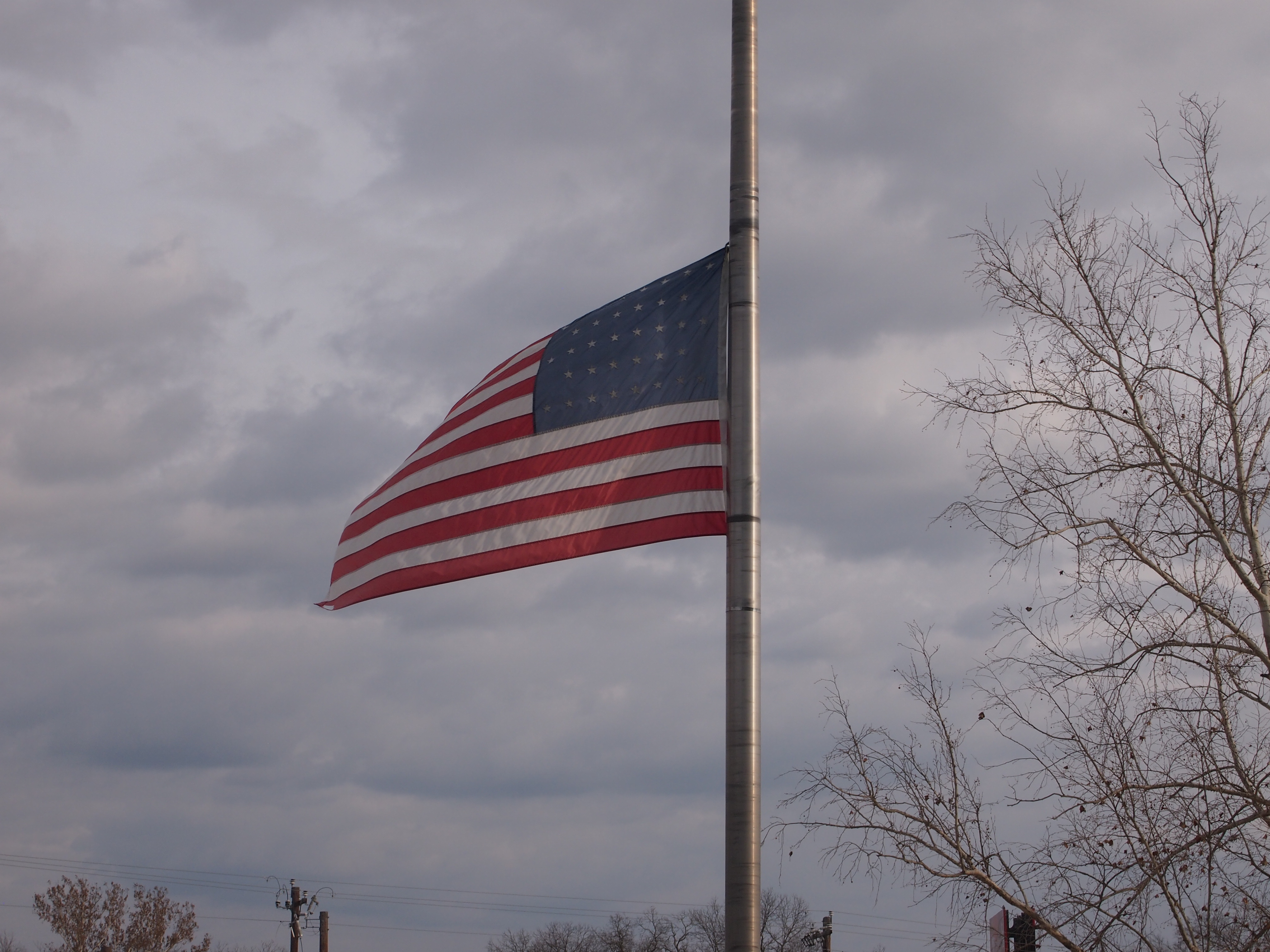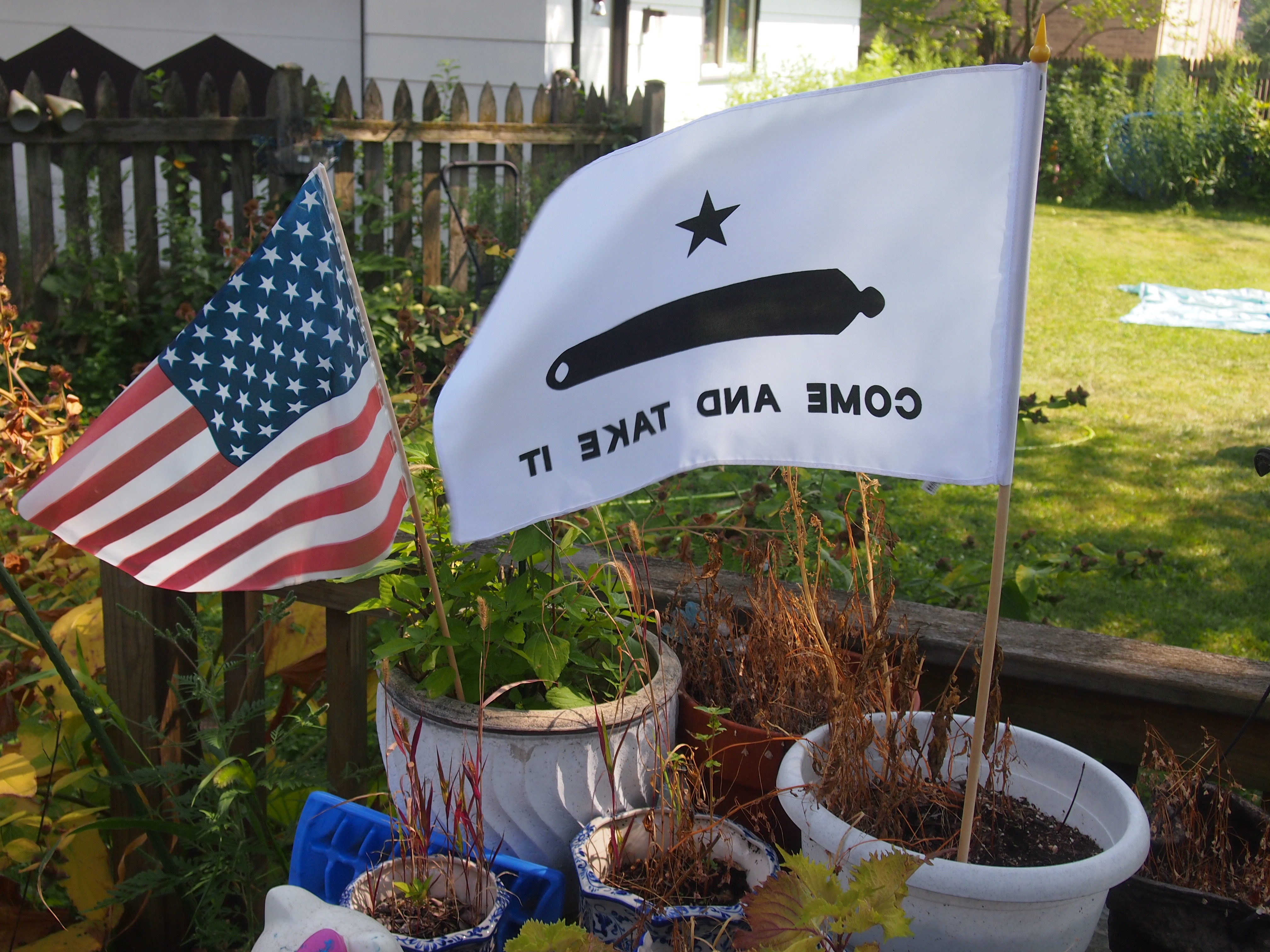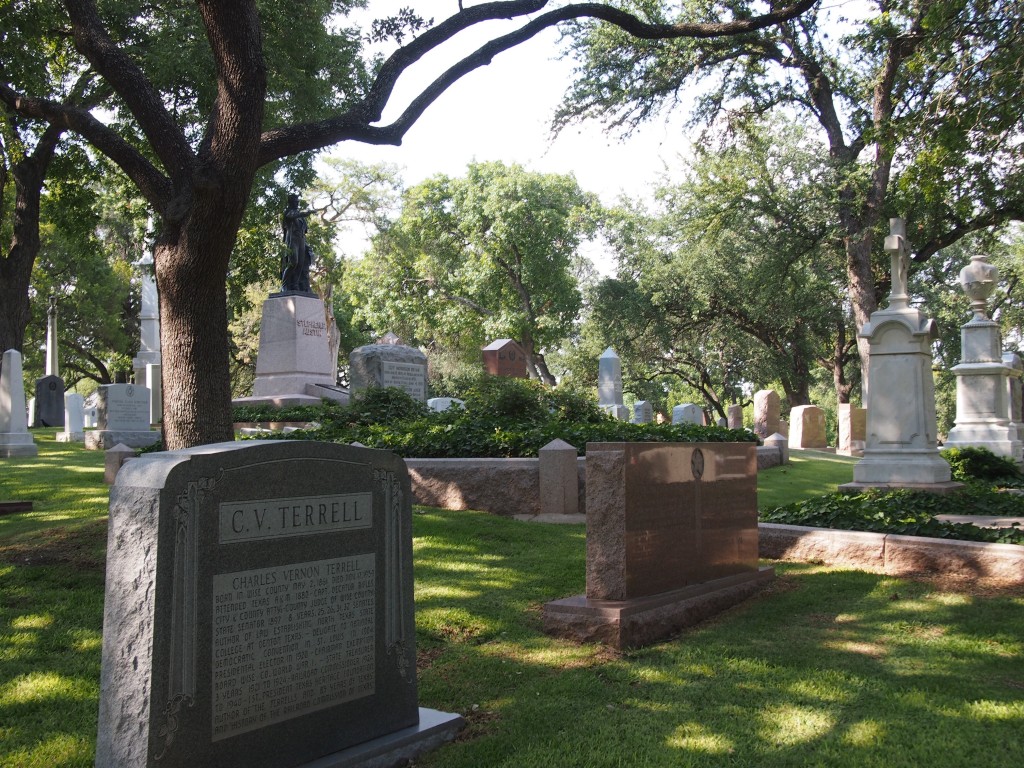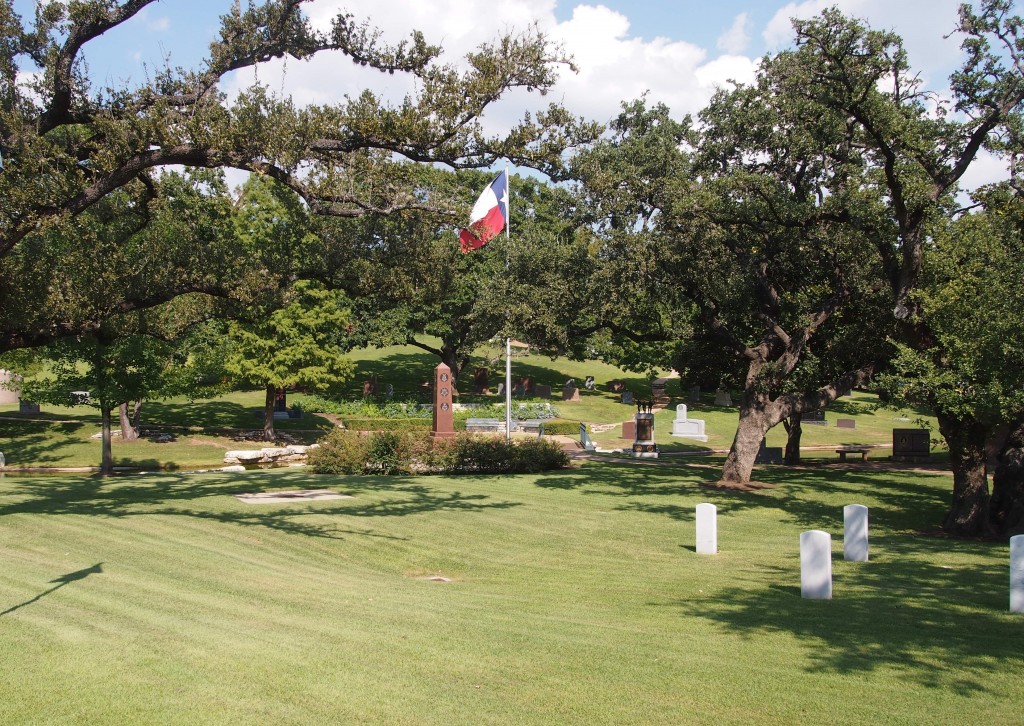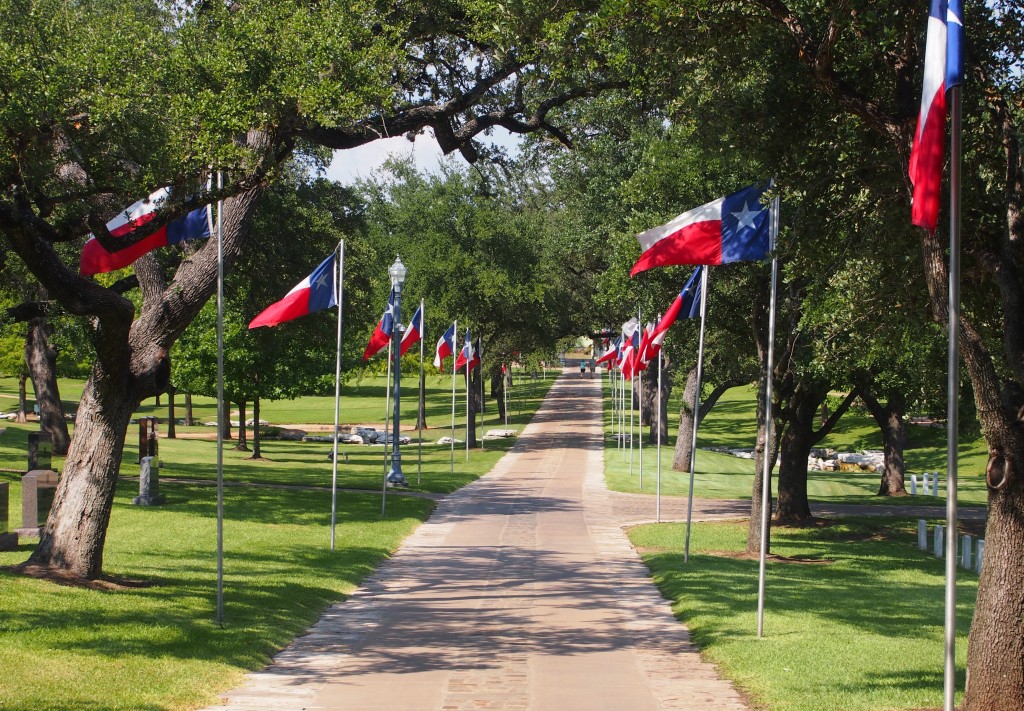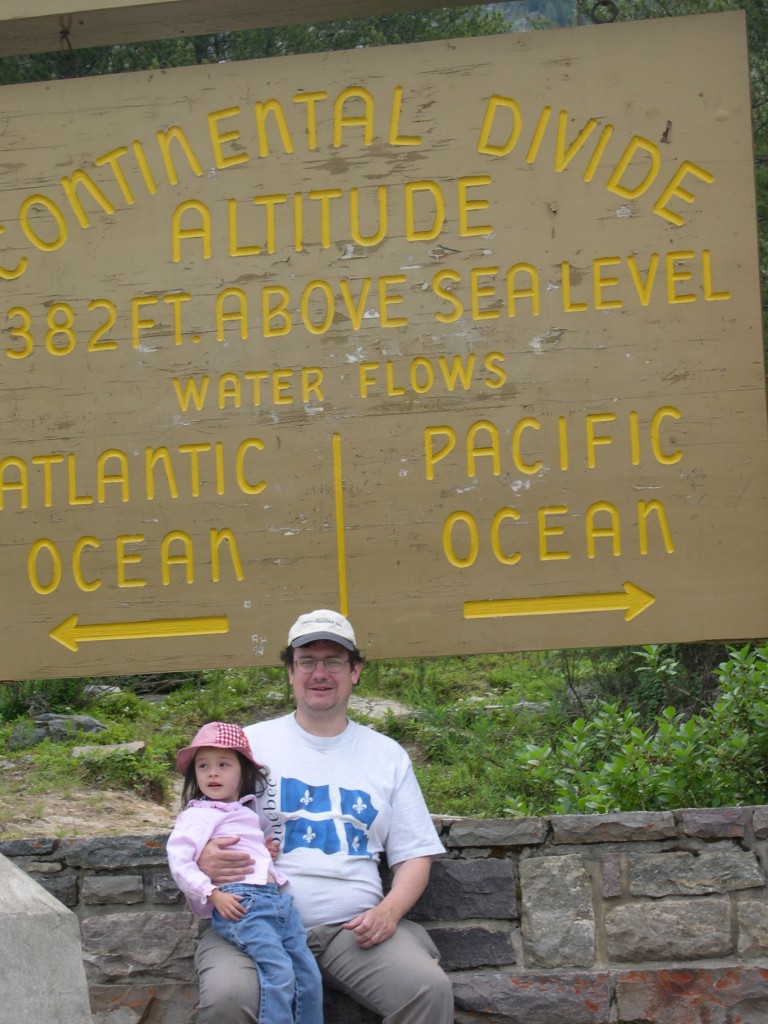On Saturday we went to the city for a few hours. Yuriko went to a cake-making class offered by a woman she knows who lives near Humboldt Park. I was the driver, since it’s complicated to get there by train and bus, and driving in the city unnerves her.
As it should, with cars everywhere, parked and in motion, operated by sometimes careless or aggressive drivers and often closer than you think; delivery trucks blocking the way; road construction crews doing likewise — though the rough surfaces and potholes never seem to go away; buses acting as if they own the road; bicyclists passing between you and parked cars suddenly and with inches to spare; random pedestrians all over the place, a few with no sense; people opening their car doors in front of you without warning, emerging onto the street (some with children in tow); large intersections without the benefit of turning signals; and stretches of street being resurfaced, but not completed just yet, which on a dry June day raises clouds of dust through which you must pass.
Then there’s the matter of parallel parking. Yuriko doesn’t care for it. A lot of people would say the same. I never knew how to do it until I moved to Chicago in the late ’80s. Then I learned it well. It’s an essential skill for owning a car in the city. I also learned what to expect driving in a place like Chicago. Or New York or Boston or Washington DC or Atlanta or Miami or Dallas or Los Angeles or Seattle — all harrowing in their own sweet ways.
I’ll say one good thing about driving in Chicago, though: it’s easy to know roughly where you are all the time. The streets mostly form a grid, with major streets at regular intervals, and just about every street, even the most minor, marked with an easy-to-see, well-placed and legible street sign. Not every city has such luxuries, and I mean you, Boston.
With Yuriko at her cake class, I had a couple of hours to kick around in the late morning. The Puerto Rican Festival in Humboldt Park, Fiestas Puertorriqueñas, was slated to start at noon, as evidenced by people carrying the commonwealth’s well designed flag into the park and the flag being flown by a lot of passing cars. Here’s a vendor selling some.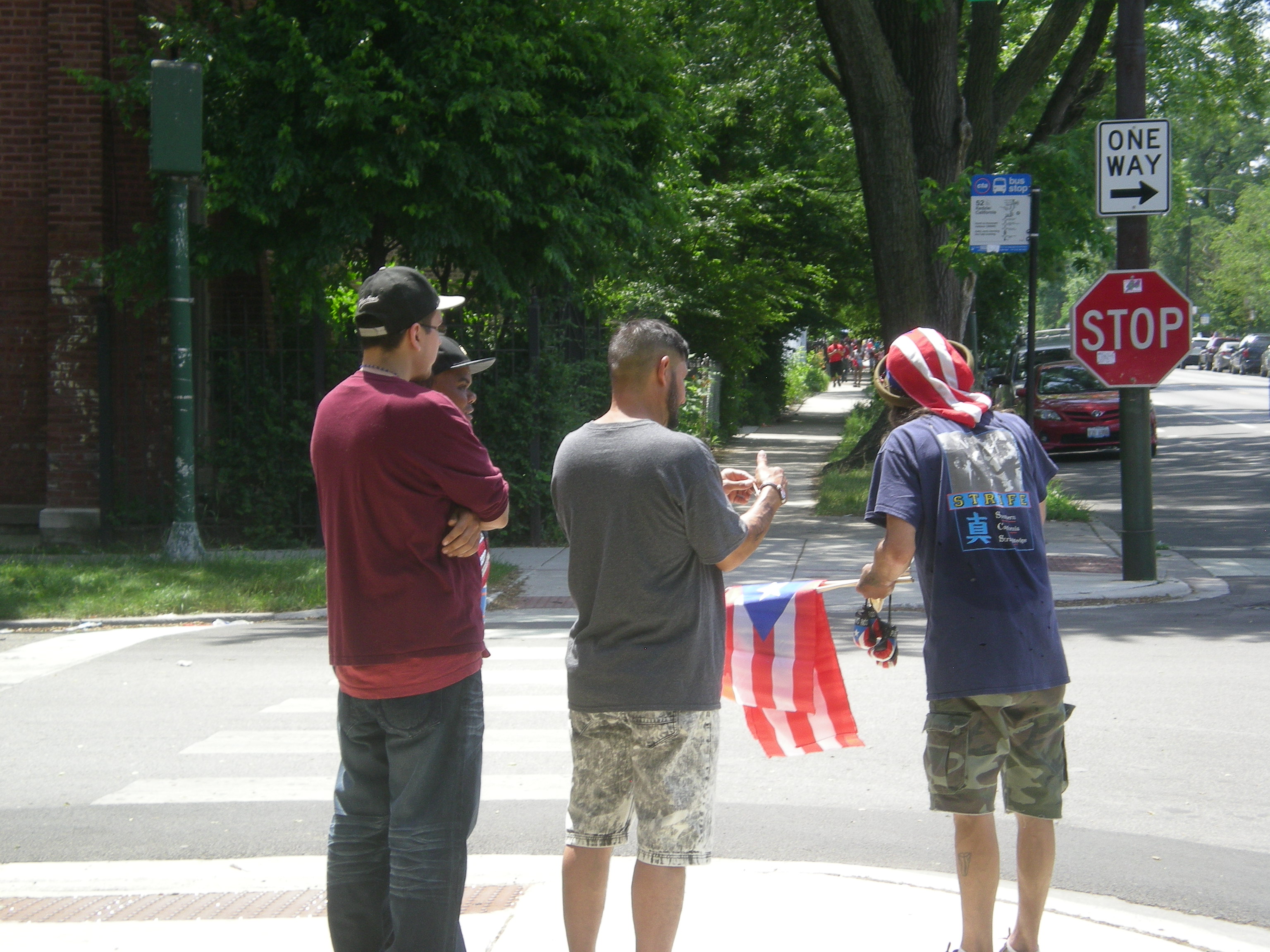 Since the event wasn’t actually under way, I went elsewhere. I visited St. Mary of the Angels church about 20 blocks to the east, taking a North Avenue bus, and then walking back, partly on the 606, the same linear park we visited on its opening day a little more than a year ago.
Since the event wasn’t actually under way, I went elsewhere. I visited St. Mary of the Angels church about 20 blocks to the east, taking a North Avenue bus, and then walking back, partly on the 606, the same linear park we visited on its opening day a little more than a year ago.
This time I saw a bit more of the trail’s eastern end, though not quite to the east terminus. At around 11 am in mid-June, the sun is high and the trail very warm. Temps were in the upper 80s F. That didn’t keep people away.
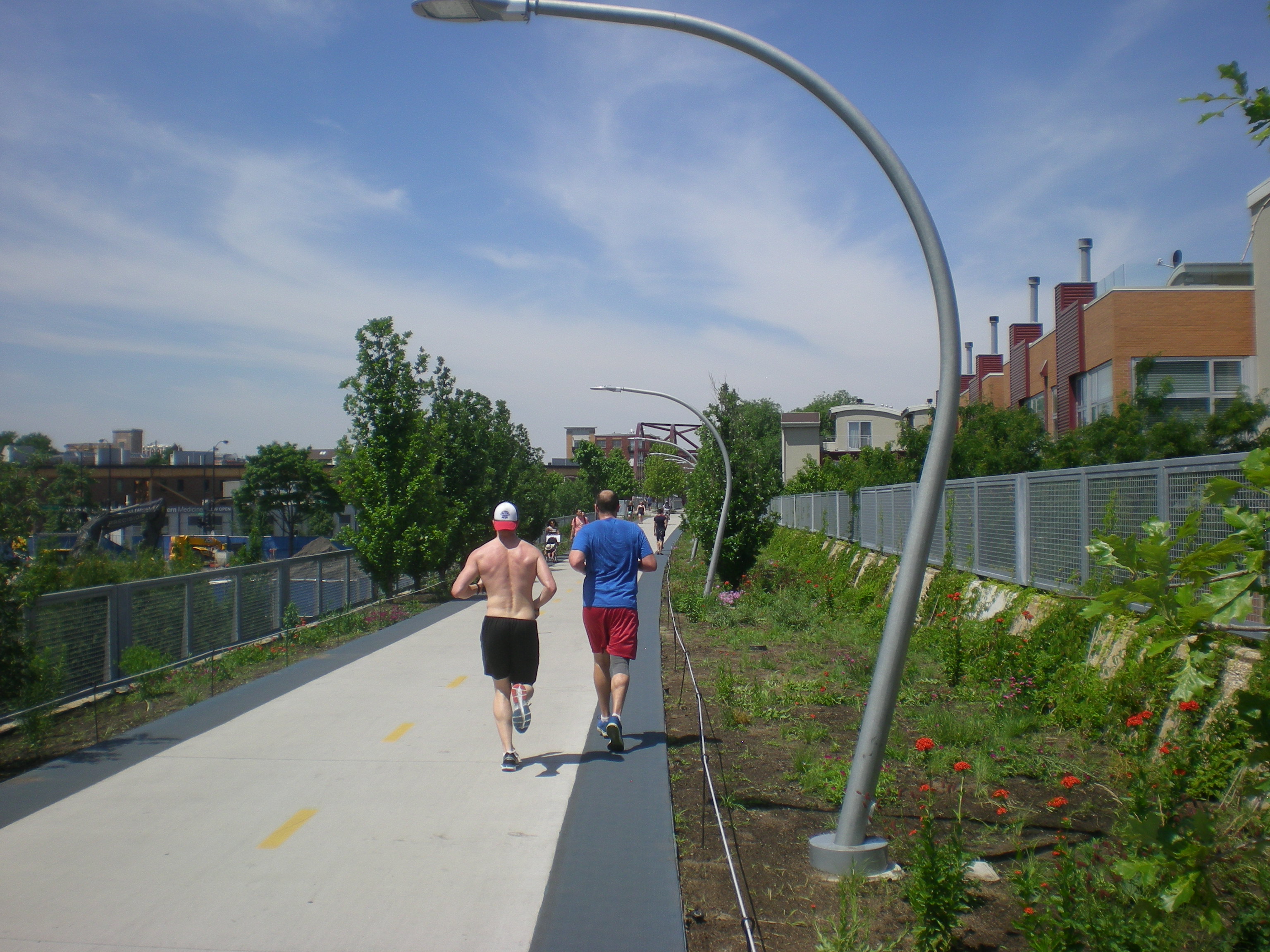 I was glad to see that the landscaping on the edges is now more lush than a year ago. Also, development of the land nearby continues apace.
I was glad to see that the landscaping on the edges is now more lush than a year ago. Also, development of the land nearby continues apace.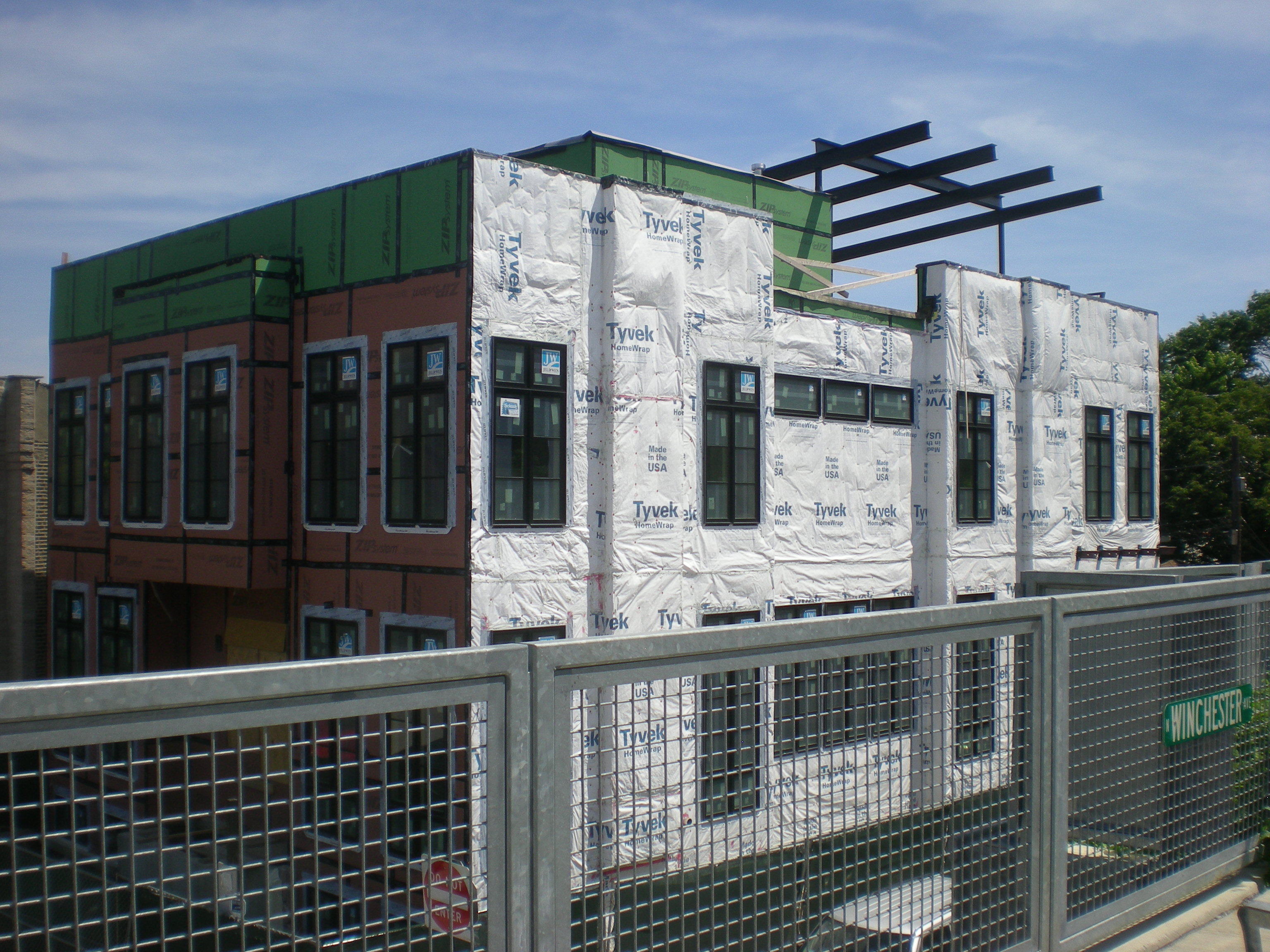 I also noticed that the trail is short on shade. Most of the year, that wouldn’t matter, but in summer it’s important. Even the trailside parks weren’t particularly shady. At Park 567, where the trail crosses over Milwaukee Ave., there were only three or four spots under trees offering any significant shade. I was lucky enough to be able to sit by myself in one sizable pool of shade, though I would have shared the space if anyone had asked.
I also noticed that the trail is short on shade. Most of the year, that wouldn’t matter, but in summer it’s important. Even the trailside parks weren’t particularly shady. At Park 567, where the trail crosses over Milwaukee Ave., there were only three or four spots under trees offering any significant shade. I was lucky enough to be able to sit by myself in one sizable pool of shade, though I would have shared the space if anyone had asked.
I got a look at the trail’s first art installation, the serpentine “Brick House,” by a sculptor named Chakaia Booker.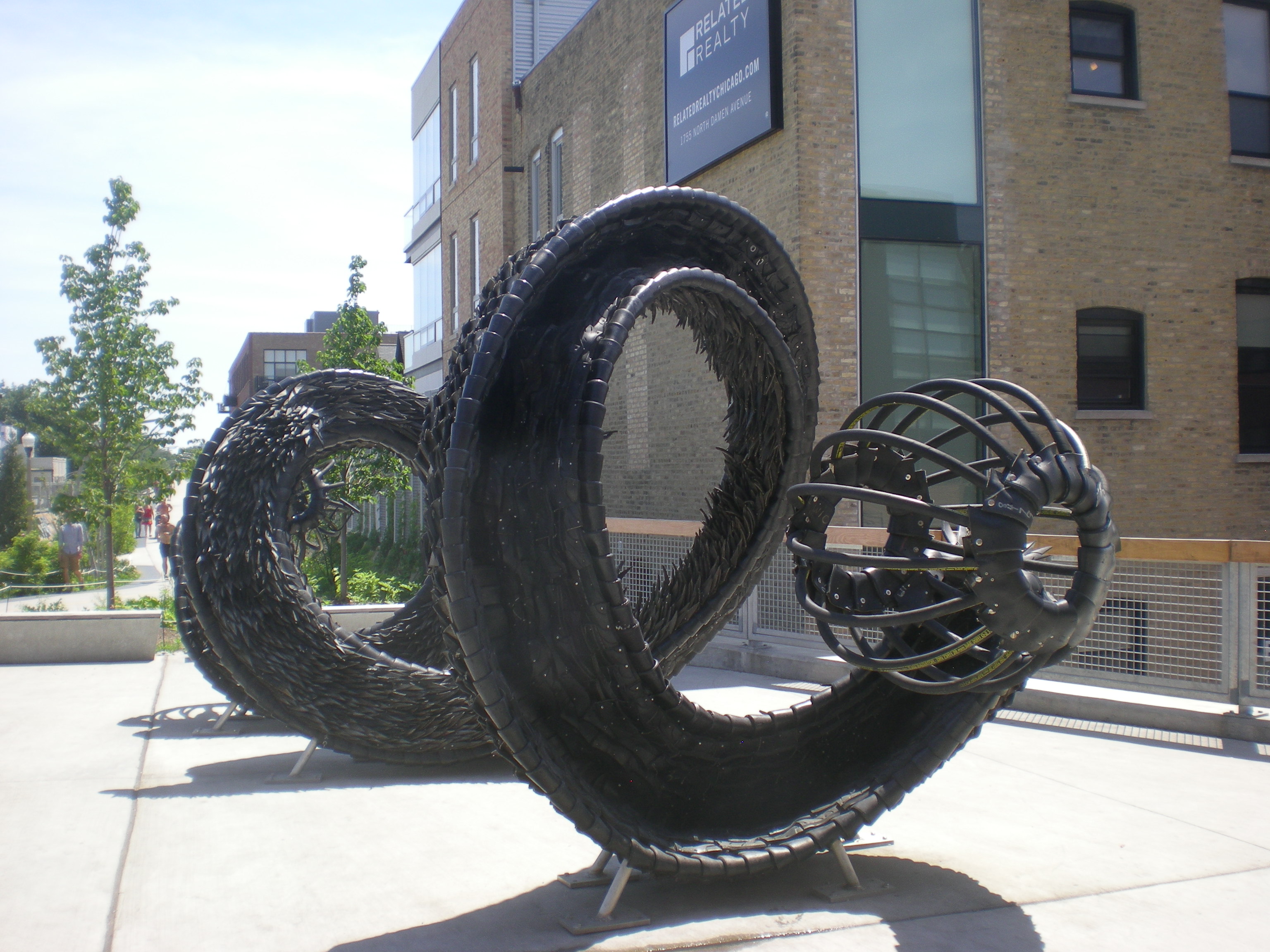 I’ll consider the title whimsical, since no bricks are involved, or any obvious connection to the song celebrating feminine pulchritude. It’s made of stainless steel and recycled tire rubber. Put in last fall, the piece attracts children, who instantly want to climb it.
I’ll consider the title whimsical, since no bricks are involved, or any obvious connection to the song celebrating feminine pulchritude. It’s made of stainless steel and recycled tire rubber. Put in last fall, the piece attracts children, who instantly want to climb it.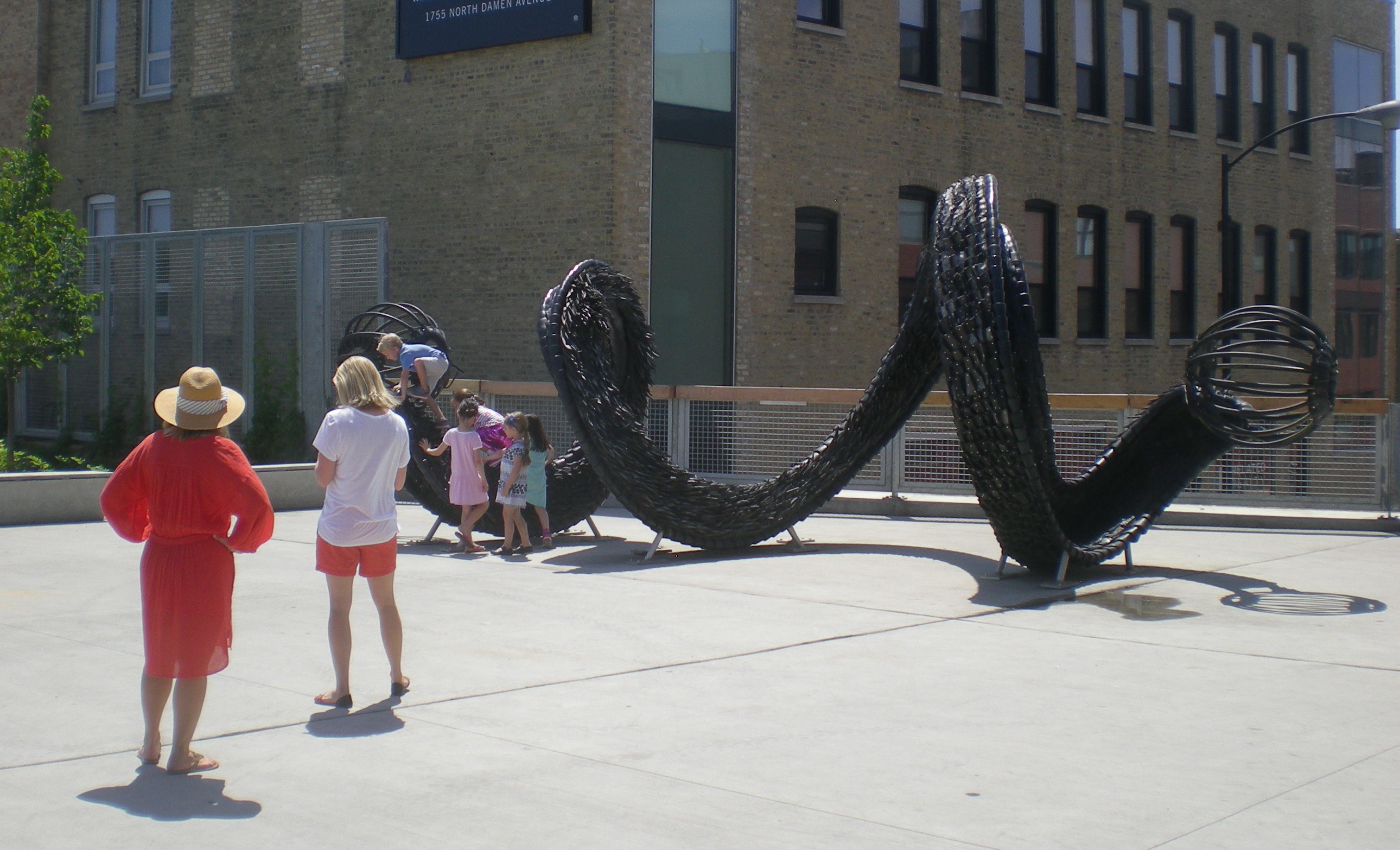 I would have spent more time on the trail, but I’d forgotten a hat (though not water). The shade, provided by mature trees, is better on many of Chicago’s neighborhood streets, so after about a half mile, I walked the rest of the way on small streets, as well as along North Ave., whose buildings also provided shade at that time of the day, at least on the south side of the street. I’m not the devil-may-care teen I used to be, who sometimes walked miles in clear 90-plus degree weather in San Antonio or Austin.
I would have spent more time on the trail, but I’d forgotten a hat (though not water). The shade, provided by mature trees, is better on many of Chicago’s neighborhood streets, so after about a half mile, I walked the rest of the way on small streets, as well as along North Ave., whose buildings also provided shade at that time of the day, at least on the south side of the street. I’m not the devil-may-care teen I used to be, who sometimes walked miles in clear 90-plus degree weather in San Antonio or Austin.
